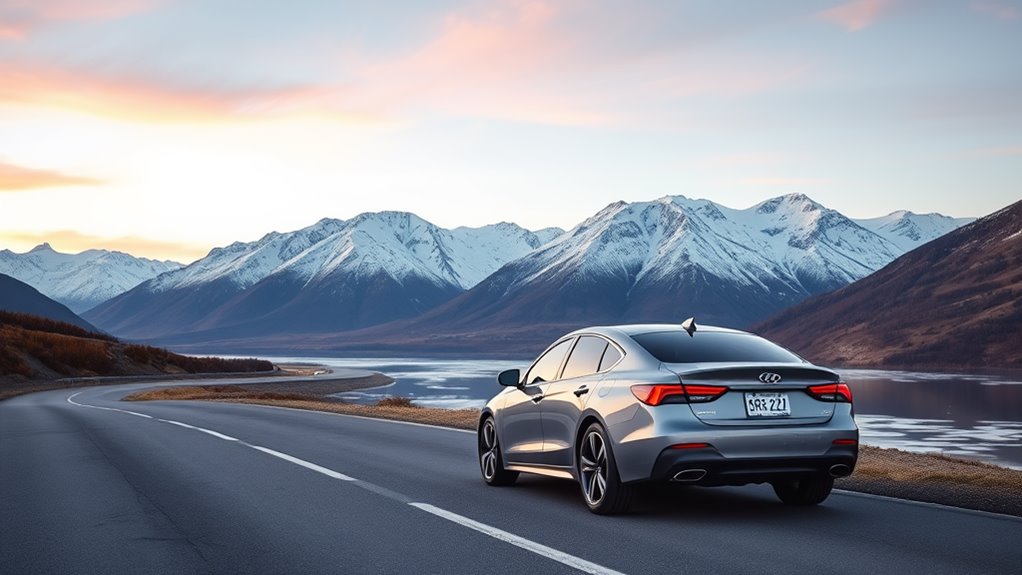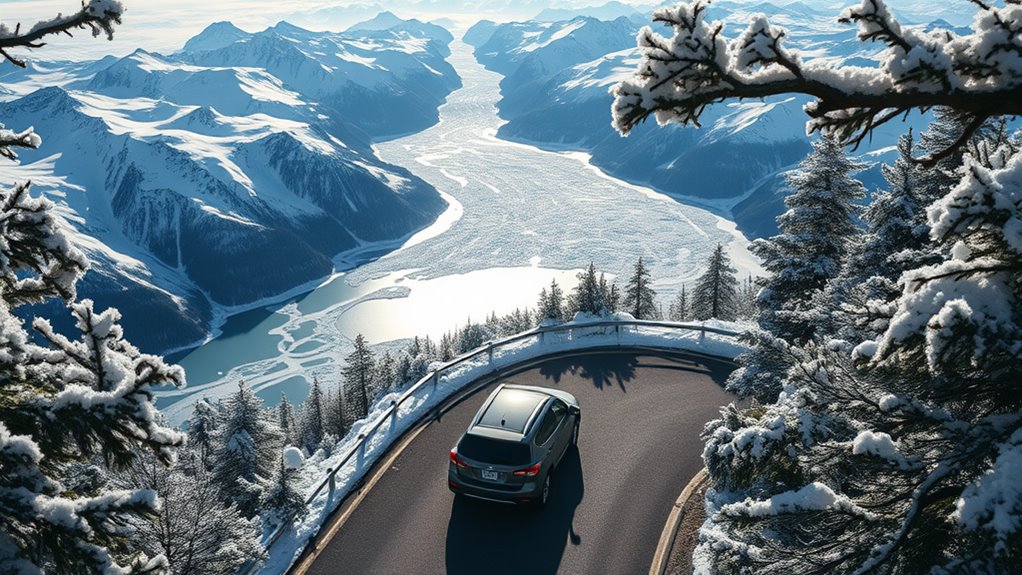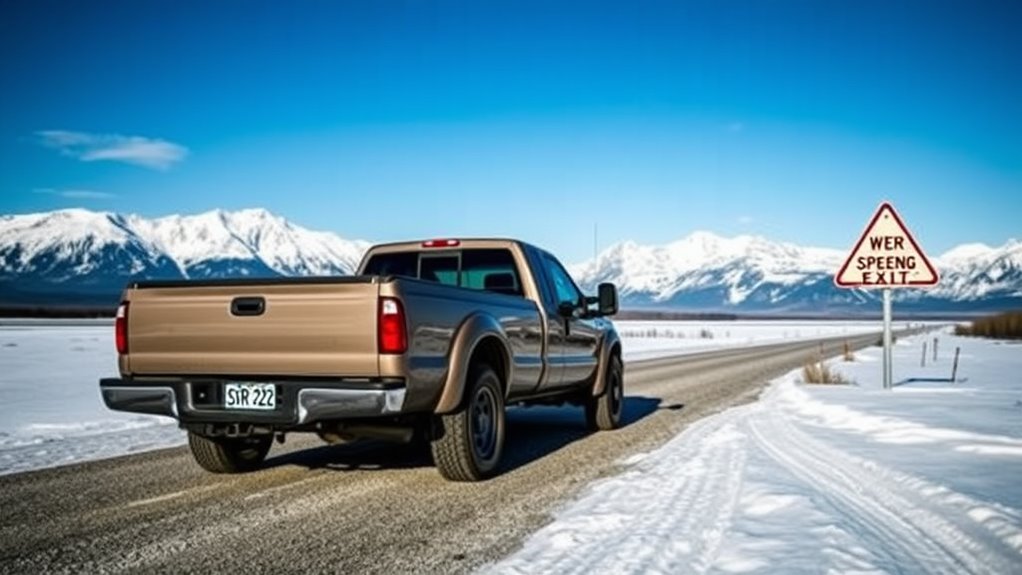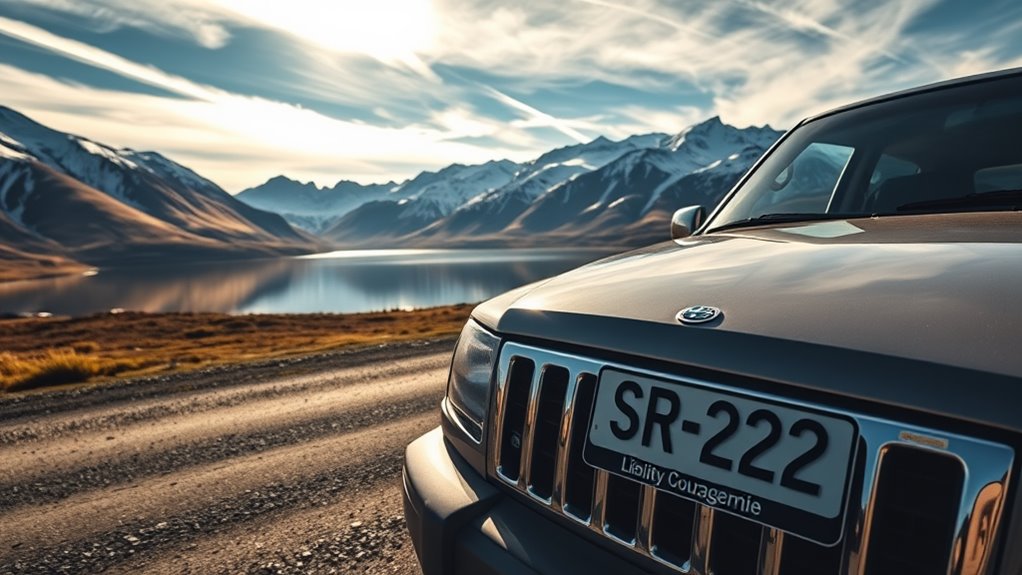Getting behind the wheel without proper insurance can feel like walking a tightrope—one misstep, and you’re in trouble. In Alaska, if you’ve faced issues like a DUI or license suspension, you might need SR-22 insurance. This certificate proves you meet the state’s liability requirements, but the implications can be significant. What happens if you let your coverage lapse? The answer might surprise you.
Key Takeaways
- SR-22 insurance in Alaska is a certificate proving minimum auto liability coverage required for high-risk drivers.
- It is often mandated after DUI convictions, reckless driving, and certain license suspensions.
- Continuous coverage for a minimum of three years is essential to avoid penalties and maintain compliance.
- Non-owner SR-22 policies are available for those without vehicles needing to prove financial responsibility.
- Increased insurance premiums and filing fees are typical expenses associated with SR-22 insurance in Alaska.
What Is SR-22 Insurance?

SR-22 insurance might sound like a typical policy, but it’s actually a certificate of financial responsibility that proves you have the minimum auto liability coverage required by your state.
It’s not an insurance policy itself; instead, your insurer files it directly with the DMV or state agency to verify your active coverage.
Typically mandated for high-risk drivers, such as those with DUIs or license suspensions, it’s also known as an SR-22 Bond or Form in some states.
Typically required for high-risk drivers, SR-22 is also referred to as an SR-22 Bond or Form in various states.
Be aware that it’s not available universally, as some insurers don’t offer SR-22 filings.
This filing includes important policy details and is tied to your coverage status; any lapses will trigger automatic notifications to the DMV. Additionally, maintaining continuous financial responsibility is crucial to avoid penalties and ensure compliance with state laws.
When Is SR-22 Required in Alaska?
If you’ve faced certain driving offenses in Alaska, you might need to obtain an SR-22 to reinstate your driving privileges. Specifically, DUI convictions, refusals to submit to chemical testing, and reckless driving violations typically trigger this requirement. If you’ve been in an at-fault accident without insurance or received excessive speeding tickets, you’ll also need an SR-22. License suspensions due to driving without insurance or accumulating 12 or more points within a year necessitate proof of SR-22. Additionally, court orders related to minor drivers or out-of-state violations can impose SR-22 obligations. In short, various high-risk driving offenses and license compliance failures can lead to the need for SR-22 insurance in Alaska. It’s important to note that SR-22 is required for a minimum of three years following certain offenses to ensure compliance.
The Filing Process for SR-22 in Alaska
Obtaining an SR-22 in Alaska involves a straightforward filing process that your insurance provider typically handles on your behalf.
First, choose a licensed insurer willing to file the SR-22 form with the Alaska Division of Motor Vehicles. Your provider will certify that you have the required liability coverage, which includes at least $50,000 for bodily injury per person, $100,000 total per accident, and $25,000 for property damage.
They’ll submit the SR-22 form electronically or by mail, ensuring the state is notified immediately if your coverage lapses. Remember, maintaining continuous coverage is essential to avoid penalties.
Some insurers may charge a filing fee, so be prepared for that expense in addition to your premiums.
Financial Implications of SR-22

When you secure an SR-22 in Alaska, you’ll likely face increased financial implications.
First, expect your insurance premiums to rise because insurers see you as a higher risk. Filing for an SR-22 usually costs between $15 and $50, but the real financial impact comes from elevated monthly premiums, averaging $15 to $25 more than standard policies.
Prices vary widely among insurers, so it’s vital to shop around. Your driving record, the type of violation, and even your age can influence costs.
Maintaining a clean record during the SR-22 period can help you secure better rates in the future. Overall, budgeting for these changes is essential to manage your financial responsibilities effectively.
Maintaining Continuous Coverage
Maintaining continuous coverage is essential to avoid severe penalties and guarantee compliance with Alaska’s SR-22 requirements.
A lapse in coverage can lead to automatic license suspension and restart the mandatory five-year period.
To keep your insurance active, consider setting up automatic payments or regularly reviewing your policy with your provider.
Importance of Continuous Coverage
Continuous coverage is essential for ensuring compliance with Alaska’s financial responsibility laws and protecting your driving privileges.
By maintaining an active SR-22 certification, you adhere to the state’s mandatory liability requirements, which include minimum coverage of $50,000 for bodily injury per person, $100,000 per accident, and $25,000 for property damage.
Failure to keep your coverage continuous can lead to severe penalties and risks losing your license. Additionally, if your coverage lapses, the DMV is automatically notified, jeopardizing your ability to reinstate a suspended or revoked license.
Courts typically require SR-22 coverage for 3-5 years, depending on the severity of your offenses, so staying compliant is vital for your driving future and financial accountability.
Consequences of Lapse
Failing to keep your SR-22 insurance active can lead to significant consequences that impact your driving privileges and financial well-being. A lapse may result in your driver’s license being suspended, which often comes with hefty reinstatement fees.
Additionally, the state imposes fines and penalties for non-compliance, and your insurance premiums are likely to increase due to being reclassified as a high-risk driver. You’ll also need to file a new SR-22 and pay filing fees after a lapse.
Insurance companies will notify authorities through an SR-26 form, which can trigger administrative actions and penalties. It’s essential to maintain continuous coverage to avoid these complications and guarantee your driving status remains intact.
Options for Maintaining Coverage
To guarantee you meet Alaska’s SR-22 requirements, it’s vital to stay proactive about your insurance coverage. You need to maintain your SR-22 for three years and make sure you meet the state’s minimum coverage requirements.
If you receive a notification from the DMV about your SR-22 obligations, act promptly to avoid penalties. Consider opting for the cheapest providers, like Progressive, which offers minimum coverage at around $41 per month.
To keep rates manageable, shop around and compare different insurers. Remember that maintaining continuous coverage is significant; any lapse can lead to severe consequences, including the loss of your driving privileges.
Stay informed, and keep your policy active to meet all conditions effectively.
SR-22 and License Reinstatement
When your license is suspended or revoked in Alaska, obtaining SR-22 insurance becomes vital for reinstatement. This certificate acts as proof of future insurance coverage, required by law.
You must submit an SR-22 binder or application, dated within the last 30 days, to the DMV. Your insurer will file the SR-22 directly with the DMV, and you’ll need to provide interim proof as necessary.
Be aware that lapsing your policy can lead to immediate notification to the DMV and potential revocation of your driving privileges.
To reinstate, check with the DMV for any additional requirements, pay the necessary fees, and maintain continuous coverage to avoid future issues. Following these steps helps streamline the reinstatement process.
Common Offenses Leading to SR-22 Requirements

Common offenses that lead to SR-22 requirements in Alaska often stem from serious driving violations.
DUI convictions are among the most common, requiring first-time offenders to maintain SR-22 for five years. Reckless driving, which shows a blatant disregard for safety, also necessitates SR-22 filing.
DUI and reckless driving violations lead to mandatory SR-22 filing, highlighting the need for responsible driving.
If you’re caught driving without insurance or with insufficient coverage below Alaska’s minimum liability limits, you’ll need to file an SR-22 as well. Accumulating multiple traffic offenses within a short period can trigger SR-22 requirements too.
Each of these violations comes with specific filing durations and consequences, emphasizing the importance of maintaining safe driving practices to avoid the complications associated with SR-22 insurance.
Cost Factors Affecting SR-22 Insurance
Understanding the cost factors affecting SR-22 insurance is essential for drivers facing this requirement. Your driving history plays a significant role; the severity and frequency of offenses can cause premiums to rise.
Location also matters, as rates differ across states and regions. Younger drivers generally face higher costs due to inexperience.
If you don’t own a vehicle, non-owner SR-22 policies are available. The insurance provider you choose will further impact your rates, as companies have varying pricing structures.
Additionally, factors like state fees, filing fees, and potential penalties can add to your overall costs. To manage expenses, compare quotes, seek discounts, and consider adjusting your policy details for the best financial outcome.
Non-Owner SR-22 Policies Explained
Non-owner SR-22 policies provide essential proof of financial responsibility for drivers who don’t own vehicles but need to meet legal requirements.
To qualify, you must meet specific eligibility criteria, often related to past driving violations.
These policies primarily cover your liability while driving borrowed or rental cars, ensuring you stay compliant without the need for vehicle ownership.
Definition of Non-Owner SR-22
If you’re a driver without a vehicle, a non-owner SR-22 insurance policy might be essential for you. This type of policy provides liability coverage, ensuring you meet state insurance requirements while driving cars you don’t own.
It’s specifically designed for high-risk drivers who need to prove their financial responsibility. Non-owner SR-22 policies offer secondary liability coverage, which kicks in after the vehicle owner’s insurance is exhausted, but don’t cover damages to the vehicle itself.
Your insurer will file the SR-22 form with your state’s Department of Motor Vehicles to confirm compliance. Generally, these policies are more affordable than standard SR-22 options, reflecting the reduced coverage and risk involved.
Eligibility Requirements Explained
To qualify for a non-owner SR-22 policy in Alaska, you must meet specific eligibility criteria set by the state. This policy is designed for drivers needing license reinstatement after serious violations, such as DUI or reckless driving.
Even if you don’t own a vehicle, you’re required to prove state-minimum liability coverage as mandated by the Alaska DMV. This applies to individuals who frequently borrow or rent vehicles. Non-compliance can lead to license suspension, fines, and extended SR-22 filing periods.
You’ll need to maintain continuous coverage for the mandated period, typically three years, without gaps. Any lapse in coverage resets the compliance clock, so staying informed and compliant is essential.
Coverage Options Available
Understanding the coverage options available with a non-owner SR-22 policy is essential for drivers in Alaska who need to meet state compliance without owning a vehicle.
These policies provide liability-only coverage, protecting you against bodily injury and property damage in at-fault accidents while driving borrowed or rented vehicles. However, they exclude physical damage coverage and don’t apply to regular-use vehicles.
The minimum liability required matches Alaska’s mandates: $50,000 for bodily injury per person, $100,000 per accident, and $25,000 for property damage.
Insurance providers file the SR-22 directly with the DMV, and coverage typically lasts a minimum of three years.
Keep in mind, this policy doesn’t cover commercial driving or family vehicles.
Understanding Liability Coverage Limits

Liability coverage limits are vital elements of your auto insurance policy, especially when dealing with SR-22 requirements in Alaska.
The state mandates a minimum bodily injury liability of $50,000 per injured person, capped at $100,000 per accident. Additionally, you must have property damage liability of at least $25,000 per accident.
These limits are essential for maintaining your driving privileges after certain violations, such as DUI or driving without insurance. If you don’t own a vehicle, a non-owner policy can provide the necessary liability coverage.
Frequently Asked Questions
How Long Does It Take to Process an SR-22 Filing?
Processing an SR-22 filing typically takes 1 to 3 business days by your insurance provider, followed by an additional 10 business days for the DMV to review and finalize your reinstatement. Stay proactive for quicker results.
Can I Change Insurance While Having an SR-22?
Yes, you can change insurance while having an SR-22. Just make certain your new insurer files the SR-22 to keep you compliant. Remember to maintain continuous coverage during the changeover to avoid any penalties.
What Happens if I Let My SR-22 Lapse?
If you let your SR-22 lapse, about 75% of drivers face increased insurance premiums. You’ll risk license suspension, incur penalties, and may have to restart your SR-22 requirement, complicating your driving status considerably.
Is SR-22 Coverage Valid in Other States?
Yes, SR-22 coverage is valid in other states that require it. However, each state’s specific regulations can differ, so you should check local requirements to guarantee compliance during your travels or relocation.
Can I Get an SR-22 Without a Vehicle?
Absolutely, you can get an SR-22 without owning a vehicle. This form proves your financial responsibility, and insurers offer non-owner policies specifically designed to meet legal requirements while ensuring compliance with state regulations.
Conclusion
In conclusion, SR-22 insurance in Alaska is essential for high-risk drivers to maintain legal driving status. Remember, nearly 1 in 5 Alaskans may face the need for SR-22 due to various infractions. Staying informed about your coverage and requirements can save you from hefty penalties. By understanding the process and costs, you can navigate the SR-22 landscape with confidence. Prioritize continuous coverage to guarantee your driving privileges remain intact and avoid future complications.

